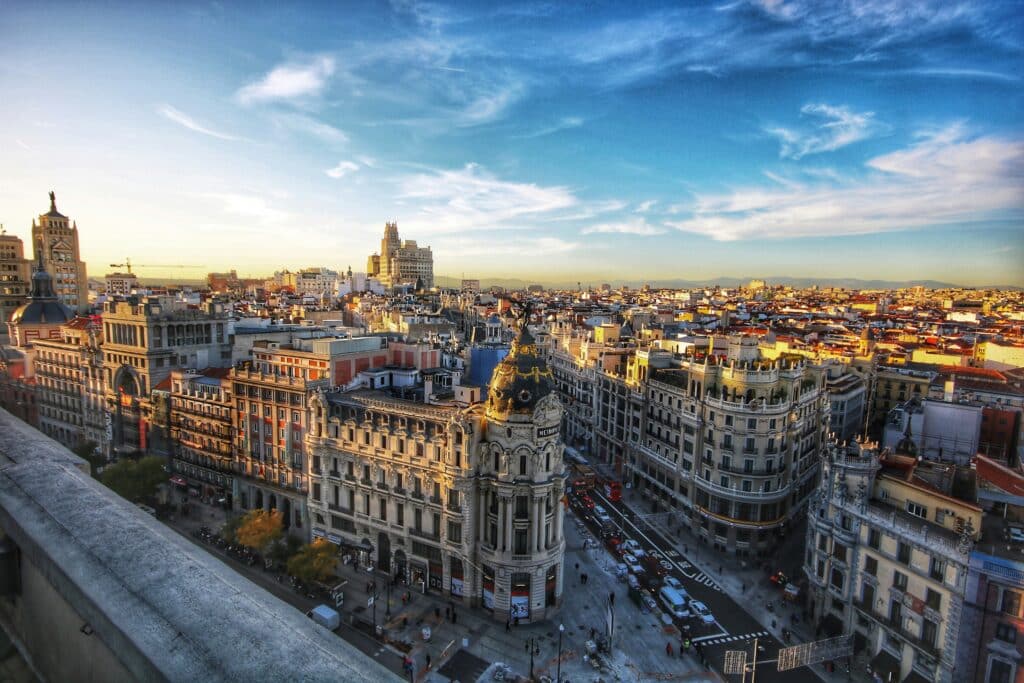Status quo of renewable gas markets in the EU
Topic of the month: A European Journey to renewable gas markets
Renewable gases, especially biomethane, have gained momentum in light of the EU targets for the decarbonisation of the energy sector, showing the potential to replace natural gas in the future.
[1]
Several studies and scenario analyses predict that renewable gases will play an important role in the decarbonisation of the gas grid [2]–[4]. A study by Eurogas shows that renewable gases have the potential to cover 70% of European gas demand by 2050 [5]. The “Gas for Climate” study by Navigant from 2019 predicts, in an “optimised gas” scenario, that in 2050 about 60% of the current natural gas consumption in the EU will be covered by renewable gases [6]. Other projections are more conservative. For instance, ENTSOG, ENTSOE [7] expect that renewable gas will account for less than 14% of the total European gas demand in 2040 in their most favourable scenario.
Regardless of the different predictions over future shares of renewable gas in the EU, the need for decarbonising the gas system is clearly stated in all the mentioned studies. Biomethane is one of the most cost-efficient energy carriers for decarbonising the gas grid. It can be utilised for transport, electricity, heating and industry, where electricity cannot substitute fossil fuels.
The number of biomethane plants in the EU has increased from 187 in 2011 to 540 in 2017.
[9]
In 2017, biomethane production in Europe amounted to 19,352 GWh (1.94 bcm) across 18 producing countries2 [9]. Biomethane production is still too cost-intensive to be feasible without subsidies [10]. Thus, national support schemes addressed to biogas and biomethane production and consumption have had a major role in the uptake of biomethane [11]. According to Horschig et al. [12], with support schemes for biomethane phasing out in several EU Member States, there is an opportunity for biomethane market players to benefit from cross-border trade of biomethane.
Since the production costs for biomethane vary widely, depending on the feedstock used, national regulation, and transport costs [13], [14], biomethane production is unevenly distributed in Europe [15]. Therefore, biomethane trade amongst European countries has been increasing during the last years. The same can apply to other renewable gases, such as green hydrogen.
However, there are still some unclarified issues and barriers to renewable gas markets.
Bowe [16] identifies the variation in the biomethane support schemes and the limitation of these support schemes to national production in European countries as a key barrier for biomethane trade. Strauch, Krassowski and Singhal [17] mention the harmonisation of the rules for biomethane trade an important factor for reaching the EU objective of creating a single EU gas market. For hydrogen, no subsidy scheme goes beyond investment and R&D support until today. In addition, there is no regulatory clarification of what kind of hydrogen will contribute to national renewable energy targets, and can be traded as green hydrogen.
In this series, we aim to initiate the perception of renewable gas as a commodity, such as natural gas, with an accompanying market platform.
We take a deeper look into the biomethane market in the European Union and the changes that are going to be implemented according to the recast of the Renewable Energy Directive (from here on EU RED II). We use market theory to organise the biomethane trading activities, and define several metrics that can be used to evaluate whether the current biomethane trading activities follow a market structure and what we need to develop transparent, well-performing, and competitive renewable gas markets.
Learn more!
Listen to the interview with Tara Amirkhizi on FutureGas project
.
.
.
.
[1] IEA and AIE, “World Energy Outlook 2018,” 2018.
[2] Ecofys, “Gas for Climate,” 2018.
[3] K. Petrov, W. Steinborn-Cheng, C. Francese, and M. Paletar, “Study on the Future Role of Gas from a Regulatory Perspective,” 2018.
[4] C. Mihnea, C. Egenhofer, and M. Elkerbout, The future of gas in Europe : Review of recent studies on the future of gas. 2019.
[5] Eurogas, “Eurogas Scenario Study with PRIMES : Overachieving climate targets with gas at a lower cost.” 2018.
[6] W. Terlouw et al., “Gas for Climate. The optimal role for gas in a net-zero emissions energy system,” 2019.
[7] entsog, “TYNDP 2018: Scenario Report,” 2018.
[8] J. Speirs, P. Balcombe, E. Johnson, J. Martin, N. Brandon, and A. Hawkes, “A greener gas grid : What are the options,” Energy Policy, vol. 118, no. March, pp. 291–297, 2018.
[9] European Biogas Association, “Statistical Report of the European Biogas Association 2018,” Brussels, 2018.
[10] P. Y. Hoo, H. Hashim, and W. S. Ho, “Economic feasibility of Feed-in Tariff (FiT) for biomethane injection into natural gas distribution grid,” Chem. Eng. Trans., vol. 70, pp. 631–636, 2018.
[11] M. Scheftelowitz, R. Becker, and D. Thrän, “Improved power provision from biomass: A retrospective on the impacts of German energy policy,” Biomass and Bioenergy, vol. 111, no. December 2017, pp. 1–12, 2018.
[12] T. Horschig, A. Welfle, E. Billig, and D. Thrän, “From Paris agreement to business cases for upgraded biogas: Analysis of potential market uptake for biomethane plants in Germany using biogenic carbon capture and utilization technologies,” Biomass and Bioenergy, vol. 120, no. November 2018, pp. 313–323, 2019.
[13] E. Spijker et al., “A level playing field for the European biogas and biomethane markets-Case of the Netherlands and Germany: policy environment, key differences and harmonisation issues,” no. March, 2015.
[14] L. Skovsgaard and I. G. Jensen, “Recent trends in biogas value chains explained using cooperative game theory,” Energy Econ., vol. 74, pp. 503–522, 2018.
[15] M. Torrijos, “State of Development of Biogas Production in Europe,” Procedia Environ. Sci., vol. 35, pp. 881–889, 2016.
[16] S. Bowe, “Market development and certification schemes for biomethane,” in The Biogas
Handbook, 2013, pp. 444–462.
[17] S. Strauch, J. Krassowski, and A. Singhal, “Policy guide on biogas injection into the natural gas grid,” 2013.
[18] M. Alsaleh and A. S. Abdul-rahim, “The Economic Determinants of Bioenergy Trade Intensity in the EU-28 : A Co-Integration Approach,” Sustainability, pp. 1–20, 2018.
[19] J. Matzenberger et al., “Future perspectives of international bioenergy trade,” Renew. Sustain. Energy Rev., vol. 43, pp. 926–941, 2015.
[20] S. B. Magar, P. Pelkonen, L. Tahvanainen, R. Toivonen, and A. Toppinen, “Growing trade of bioenergy in the EU: Public acceptability, policy harmonization, European standards and certification needs,” Biomass and Bioenergy, vol. 35, no. 8, pp. 3318–3327, 2011.
[21] P. Linares and I. J. Pérez-Arriaga, “A sustainable framework for biofuels in Europe,” Energy Policy, vol. 52, pp. 166–169, 2013.
[22] A. Faaij, M. Junginger, and C. S. Goh, International Bioenergy Trade, vol. 17, no. 1. 2014.
[23] M. Verdonk, C. Dieperink, and A. P. C. Faaij, “Governance of the emerging bio-energy markets,” vol. 35, pp. 3909–3924, 2007.







